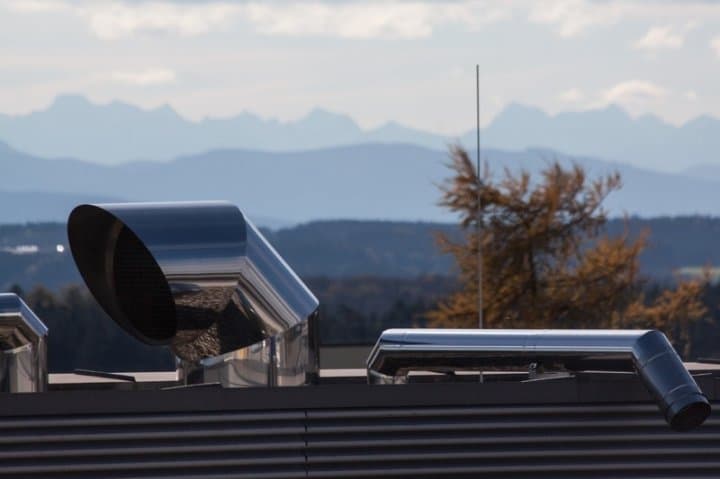Solid ventilation ducting systems play a crucial role in maintaining the air quality and temperature range. They provide a fresh air distribution inside buildings as well as marine vessels, for example. In this article, we will provide a short presentation of modern-day ventilation ducts and their practical value.
Circular ventilation air ducts
Spiro, some call it. This is a common name for spiral air ducts, which are the top choice for many industries. They are usually made from galvanized metal. This is enough for most purposes. It also makes them more affordable. The circular ventilation ducting can be seam-welded with butt-weld connections available.
The diameter of such products varies from 80 mm to 1600 mm, which makes the system quite versatile, don’t you agree? It can be fitted wherever air circulation is needed. This type of ventilation ducting can also remove stale air, as well as regulate the temperature and humidity levels inside a particular object.

A marine ventilation duct
Complete ventilation systems for marine purposes are a different story altogether. Although spiral ducts are still recommended, they need to be manufactured from better quality steel. Stainless industrial materials are a necessity, but they are still not enough. Salt water has properties of its own, you see. It’s different from rain. Therefore, additional protection is most appreciated. Only the most resilient ventilation ducts can provide the best air quality at sea.
The above refers to a large tanker as well as a kitchen on a cruise ship. Among the locations, where saltwater-resilient ducts are needed, we must also place seashore objects. Port facilities, harbor office buildings, beach restaurants, and houses. All must be provided with maximum protection from the sea moisture. That’s what purpose-built, sophisticated ventilation ducts are for.
The ability to withstand high pressure and biohazards
Since we’re talking about resilience, there are many industrial standards associated with this subject. A chemical laboratory, for example, can’t function without real-deal ventilation ducting. There’s a whole range of materials designed to accommodate very specific needs. High acidity tolerance, ventilation at extreme temperatures, and pressurized air… Whatever the industry demands.
Copper ventilation ducts with external corrugations work well with negative pressure. They are more stiff than ordinary steel ducting. They are also more appropriate when it comes to biohazard issues. Ventilation systems for hospitals should include copper ducting because it has great sanitation properties. Individual ventilation elements can be installed just in one sector, whereas cheaper ducts will be enough everywhere else. That might be a good solution for food manufacturers or a university department with just a few laboratories.
Accessories for the ventilation ducting system
Obviously, the ducts themselves must be equipped with proper accessories in order to perform well on a daily basis. Mounting elements manufactured today are quite light and easy to handle. It doesn’t take long to put them in place. In addition, they ought to be as resilient as the ventilation ducting they are supposed to support. Mounting made of plain steel might become problematic at sea. The same can be said about hot air. Some ventilation ducts can carry air that’s hotter than 400° C, you know.
Resilient ventilation access doors must also be mentioned here. They’re an obligatory element. Without them, maintenance and cleaning wouldn’t be possible. That would lead to serious malfunctions and general ventilation problems. It doesn’t take much to imagine how they might impact a potentially hazardous workplace. Hence, such access doors must meet a wide range of requirements. From tightness to ease of use – all matter, for security reasons.
Ventilation equipment certificates
The above sends a clear signal that official certificates are the best way to recognize, which ventilation ducts are more appropriate for certain tasks. Global industrial standards demand such certificates, which is understandable. They are technical proof that specific products passed specific tests. Without the certification, the ventilation system would have been burdened with higher risks. Something a reasonable engineer should avoid, don’t you agree?
The quality certificates are valuable. They might influence the prices, though. But with a higher bill comes a more reliable ventilation duct. Products that lack appropriate paperwork usually cause more technical issues during their exploitation. It’s a good thing to remember this.
Conclusions
The article is just a simplified presentation of ventilation ducting technology available today. We have covered the basics. Nevertheless, they seem to be enough to grasp the general scope of the subject. Its peculiarities depend on particular industrial needs. The technology itself has a certain amount of flexibility, which means the products can be tuned to various conditions. Even the harshest.

